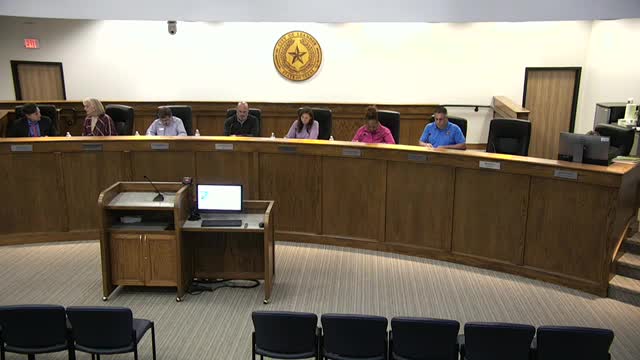Leander staff outlines microtrenching approach, recommends limits and warranties
January 02, 2025 | Leander, Williamson County, Texas
This article was created by AI summarizing key points discussed. AI makes mistakes, so for full details and context, please refer to the video of the full meeting. Please report any errors so we can fix them. Report an error »

Leander city staff introduced microtrenching as an option for retrofitting fiber in older neighborhoods and recommended a set of permit requirements intended to limit damage to city infrastructure.
Executive Director of Public Works Gina Lisonbee described the technique during the Jan. 2 briefing workshop, saying "a microtrench is a tiny, probably inch to 2 inches that they cut along the curve ribbon kind of that where the joint of the asphalt meets the the curb." She said crews place conduit in the narrow trench and backfill with flowable fill or crack seal materials.
Staff told council members they reviewed practices in Round Rock, Georgetown and Austin and that the issues to address include how many trenches will be allowed per roadway, whether arterials are eligible, coordination when the city is planning mill-and-overlay work, potholing and line-locating challenges, inspection and fee structures, and risks of creating another entry point for water into pavement.
Lisonbee said recommended specifications would limit trenches to one per side of a roadway in most cases, a maximum width of about 2.5 inches and depths of roughly 10–18 inches on local streets and 12–18 inches on arterials. She also recommended city-approved backfill plus an asphalt crack seal on top, and a two-year warranty on contractor work.
Council members asked about whether multiple providers would actually perform work on the same roadway and whether coordinated work during mill-and-overlay or reconstruction could reduce repeated cuts. Staff said Round Rock and Georgetown permit only one trench per side and that in practice competition is often limited by cost and by logistics when pavement is later milled and overlaid.
Speakers repeatedly raised the potential for damage to private water service lines and utility conflicts when trenching and coring. Lisonbee said Round Rock initially prohibited coring but later allowed it after contractors hit buried service lines; she recommended line-locating and permitting processes to reduce those risks.
Lisonbee said staff plans to return in a few months with draft specifications and permitting language for council review.
The presentation was for direction and information only; no formal action was taken at the meeting.
Executive Director of Public Works Gina Lisonbee described the technique during the Jan. 2 briefing workshop, saying "a microtrench is a tiny, probably inch to 2 inches that they cut along the curve ribbon kind of that where the joint of the asphalt meets the the curb." She said crews place conduit in the narrow trench and backfill with flowable fill or crack seal materials.
Staff told council members they reviewed practices in Round Rock, Georgetown and Austin and that the issues to address include how many trenches will be allowed per roadway, whether arterials are eligible, coordination when the city is planning mill-and-overlay work, potholing and line-locating challenges, inspection and fee structures, and risks of creating another entry point for water into pavement.
Lisonbee said recommended specifications would limit trenches to one per side of a roadway in most cases, a maximum width of about 2.5 inches and depths of roughly 10–18 inches on local streets and 12–18 inches on arterials. She also recommended city-approved backfill plus an asphalt crack seal on top, and a two-year warranty on contractor work.
Council members asked about whether multiple providers would actually perform work on the same roadway and whether coordinated work during mill-and-overlay or reconstruction could reduce repeated cuts. Staff said Round Rock and Georgetown permit only one trench per side and that in practice competition is often limited by cost and by logistics when pavement is later milled and overlaid.
Speakers repeatedly raised the potential for damage to private water service lines and utility conflicts when trenching and coring. Lisonbee said Round Rock initially prohibited coring but later allowed it after contractors hit buried service lines; she recommended line-locating and permitting processes to reduce those risks.
Lisonbee said staff plans to return in a few months with draft specifications and permitting language for council review.
The presentation was for direction and information only; no formal action was taken at the meeting.
View full meeting
This article is based on a recent meeting—watch the full video and explore the complete transcript for deeper insights into the discussion.
View full meeting
